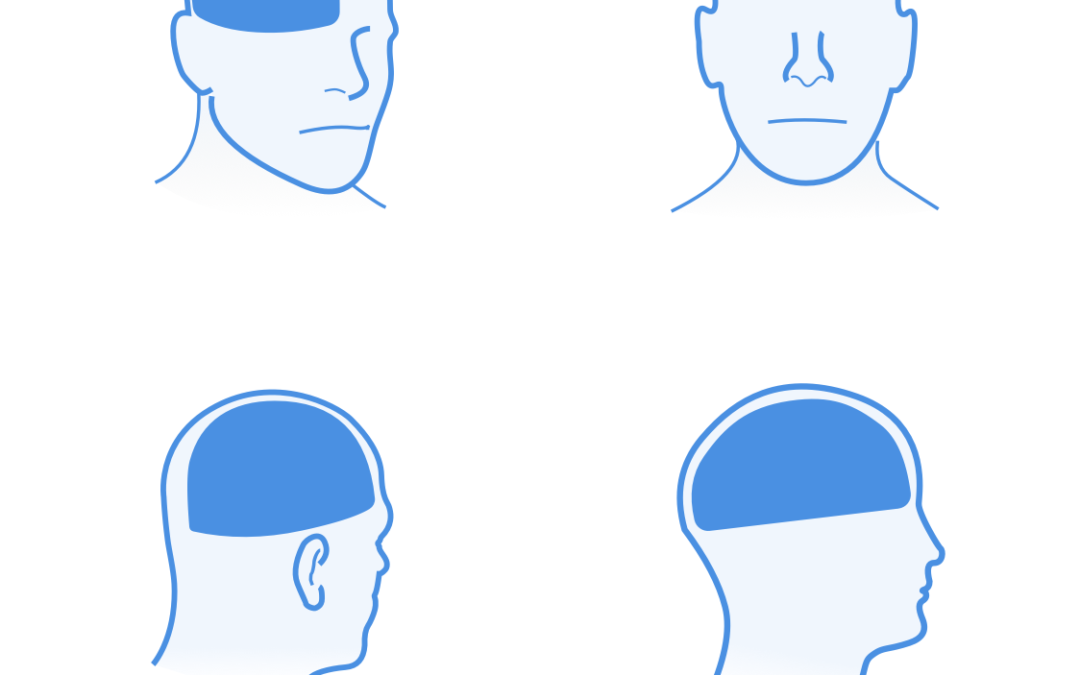In Gold Coast Headache and Migraine Clinic, we see a plethora of different presentations every day. Did you know that the International Headache Society (IHS) has outlined there are approximately 320 different types of headaches? With such a wide variety of symptoms and conditions, headache sufferers can feel confused and lost when they try to define what they’re feeling. In this blog, let’s go into a bit more detail about the main categories of headaches and migraines.
Tension-Type Headaches
According to the International Headache Society, Tension-Type Headache is the most common type of primary headache, which accounts for almost 90% of all headache types.
Tension-Type Headache is usually felt by a constant pressing, tightening, and squeezing discomfort on both sides of the head. Sufferers normally describe their pain as if they were wearing a tight helmet, which can become tighter and tighter around their head. The pain intensity can range from mild to moderate and can last anywhere between 30 minutes and up to 7 days. Nausea or vomiting is not a feature of tension-type headache, however, sensitivity to light or sound can be.
Although the pain intensity ranges from mild to moderate, it can still leave those suffering from this condition to become disabled due to the constant, annoying, and long-lasting nature of this condition.
Migraines
There are many types of migraines, but some of the main types include…
Migraines without aura
Occur in approximately 80% of migraineurs. These attacks will usually occur without warning and pain is usually felt on one side of the head, and commonly expressed as being sharp, throbbing pains behind the eye, in the forehead and temples, and on top of the head. These debilitating, sudden attacks can induce nausea and vomiting, brain fog, general fatigue, large mood changes, and hypersensitivity to stimulus.
Migraines with aura
In many sufferers, migraines are accompanied by an aura, which is a signal that a migraine is imminent. Auras normally have telltale neurological symptoms that a migraine is about to appear, such as flickering or wavy lights and/or black spots, hypersensitivity to light, sound and smell, speech disturbances, and confusion, just to name a few of the common presentations.
More information on Migraines with and without aura can be found at:
https://brisbanemigraine.com.au/migraine-headache/
Neuropathies and Trigeminal Autonomic Cephalalgias
Many types of headaches feel like stabbing or burning pains. Some notable types are…
Trigeminal Neuralgia
This is a chronic pain condition that affects one or more branches of the trigeminal nerve, which carries sensation from your face and scalp to your brain. Each attack may last anywhere from a fraction of a second, up to 2 minutes, and occasionally longer, and may present as shock-like, stabbing, shooting or sharp pain on one side of the face. The pain is almost always severe in nature and may become more severe over time.
More information about Trigeminal Neuralgias can be found at:
https://goldcoastmigraine.com.au/trigeminal-neuralgia/
Occipital Neuralgia
It is rarer, affecting 3 out of 100,000 headache sufferers, in which the occipital nerve transmits incorrect information to the brainstem, causing a sharp and severe burst of pain for a few seconds up to a few minutes in the upper neck, the back of the head (occiput) or behind the ears.
More information about Occipital Neuralgias can be found at:
https://goldcoastmigraine.com.au/occipital-neuralgia/
Cluster Headaches
It affects men 5-6 times more than women. They are regarded as excruciating, and the worst type of headache you can experience. They are commonly referred to as the ‘Suicide Headache’. The pain experienced is of an extreme nature, and has been reported by female sufferers to be worse than the pain of childbirth. Attacks occur in cluster periods or in cyclical patterns. Duration of attacks range between 15-180 minutes and may occur anywhere from 8 times per day to once every second day. Bouts of attacks known as “cluster periods” can last for weeks or several months, followed by weeks, months or even years of headache free periods.
More information on Cluster Headaches can be found at:
https://goldcoastmigraine.com.au/cluster-headache/
Secondary Headaches and Migraines
Vestibular Migraines
It can result in dizziness, unsteadiness or vertigo-like symptoms. Headache or migraine pain in the head can also be present, or at times be completely absent during an attack. Sufferers may experience nausea and vomiting and mild to moderate pain in the head either on one or both sides. Symptoms are often exacerbated by sudden movements of the head, turning the head to a particular side or when maintaining the head in one position for a prolonged time. It can also be triggered by physical exertion, exposure to bright lights, and visual disturbances such as walking and looking down a grocery store aisle.
The four main symptoms of vestibular migraines are dizziness, vertigo, imbalance, and head pain.
More information on Vestibular migraines can be found at:
https://goldcoastmigraine.com.au/vertigo-cervical-headache/
Menstrual Migraines
It ranked in the top 5 most disabling conditions for women, and affects women at different points throughout their menstrual cycle. Their migraine can typically peak on the day of their cycle, a few days before, or a few days after their cycle, and can last for a couple of hours to 5 days. Migraine symptoms can be felt on one side of the head or on both sides. In some cases, it can cause vomiting and nausea as well as being sensitive to light, sound and smell during an attack. Recent research has found that when the brainstem becomes hypersensitive, it becomes highly sensitive to even small amounts of sensory or chemical changes in the body.
In the case of Menstrual Migraine, it is thought that the slight changes in oestrogen levels (although perfectly normal), are interpreted by the sensitised brainstem as something wrong with the body, which results in the symptoms of migraine.
Whiplash Related Headaches
Whiplash injuries commonly occur during a motor vehicle accident. Whiplash headache can also occur from other injuries such as diving, sports-related injuries, or other injuries which may disturb the neck. Whiplash is categorised as an acceleration and deceleration mechanism of energy transferred into the neck. The injury sustained usually results in a bony, muscular, or ligamentous dysfunction typically in the joints of the neck. Whiplash injuries can cause mild to severe headaches and migraines depending on the extent of injury. Those with this injury may result in headaches and migraines on one side of the head in a focal point, or even both sides. Symptoms can spread down to the neck, shoulders, arms, and upper back.
Who can give me an accurate diagnosis for my migraines?
There are many options available for potential migraine treatment. A common person to see is your local GP. However, if you would like to see a specialised headache clinician, a referral from your GP is not necessary. At the Gold Coast Headache and Migraine Clinic, we are able to consult with any patient who presents with migraines or headaches. GCHM provides expert advice to assess, diagnose and potentially offer treatment for all headaches and migraine types.
Please enquire to meet with a friendly Headache Clinician and take back your life today!








